Empty Nose Syndrome (ENS)
Empty Nose Syndrome (ENS) is a rare condition that occurs after nasal surgeries when an excessive amount of tissue is removed from the nasal passages. Patients experience a constant sensation of nasal obstruction despite having open nostrils and may have difficulty breathing. ENS is a condition that negatively impacts quality of life, and treatment typically involves medical and surgical methods aimed at alleviating symptoms.
Take the First Step Now
For more information, contact us
Schedule your appointment or online consultation with Prof. Dr. Mustafa Deniz Yılmaz now. Take the first step in your treatment process and let’s begin your journey to recovery together with personalized solutions.
What is Empty Nose Syndrome (ENS)?
Empty Nose Syndrome (ENS) develops after nasal surgeries, especially when the turbinates (nasal tissues) are excessively removed or reduced. In this syndrome, patients feel as if their nose is blocked and that they are not getting enough air, even though their nostrils are open. Additionally, due to the drying out of the nasal tissues and the disruption of nasal functions, discomfort, dryness, and even difficulty breathing may occur.
The turbinates have essential functions such as regulating airflow, humidifying air, and filtering it. Excessive removal of these structures can lead to uncontrolled airflow and damage to the nasal tissues, resulting in ENS. This condition can significantly affect both physical and psychological quality of life.
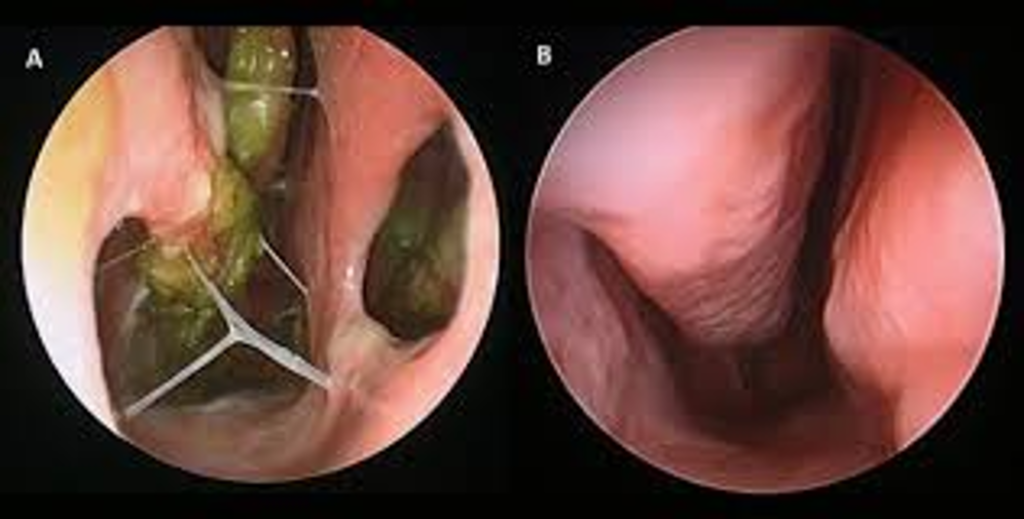
Symptoms of Empty Nose Syndrome
The symptoms of Empty Nose Syndrome (ENS) arise as a result of the excessive removal or damage to nasal tissues, leading to both physical and emotional challenges. Common symptoms of ENS include:
Breathing Difficulty:
Despite having open nostrils, patients feel that they are not getting enough air. This condition is described as the “empty nose” feeling, where the nose feels blocked even though airflow may be excessive.
Dry Nose:
There is an overwhelming sensation of dryness inside the nose. Dryness of the nasal mucosa can cause discomfort, burning, and itching in the nose.
Nasal Congestion:
Physically, the nostrils are open, but patients feel as if their nose is congested. This feeling is due to the absence of nasal tissues.
Breathing Discomfort:
Issues such as wheezing, noisy breathing, or the abnormal sensation of airflow while breathing may occur. The uncontrolled airflow leads to these discomforts.
Frequent Nasal Infections:
Due to the drying of the nasal mucosa and the disruption of the natural defense mechanisms in the nose, nasal infections may occur more frequently.
Sleep Problems:
Difficulty breathing can cause discomfort during sleep. This can lead to sleep disorders such as sleep apnea, frequent awakenings, or restless sleep.
General Fatigue and Weakness:
Continuous breathing difficulty and sleep disturbances may lead to a general feeling of fatigue and weakness. Patients may feel drained in daily activities.
Anxiety and Depression:
The constant sensation of nasal blockage and breathing problems can lead to emotional issues such as anxiety and depression. This significantly impacts quality of life.
Headaches:
The dryness inside the nose and the abnormal airflow may cause a sensation of pressure in the sinuses, leading to headaches.
These symptoms highlight how ENS can severely affect quality of life. If you are experiencing any of these symptoms, it is important to consult an Ear, Nose, and Throat (ENT) specialist. Management and treatment of ENS depend on the severity of the symptoms and the patient’s condition.
Causes of Empty Nose Syndrome
Empty Nose Syndrome (ENS) usually occurs after nasal surgeries, particularly when the turbinates (nasal tissues) are excessively removed or reduced. Below are the main causes of ENS:
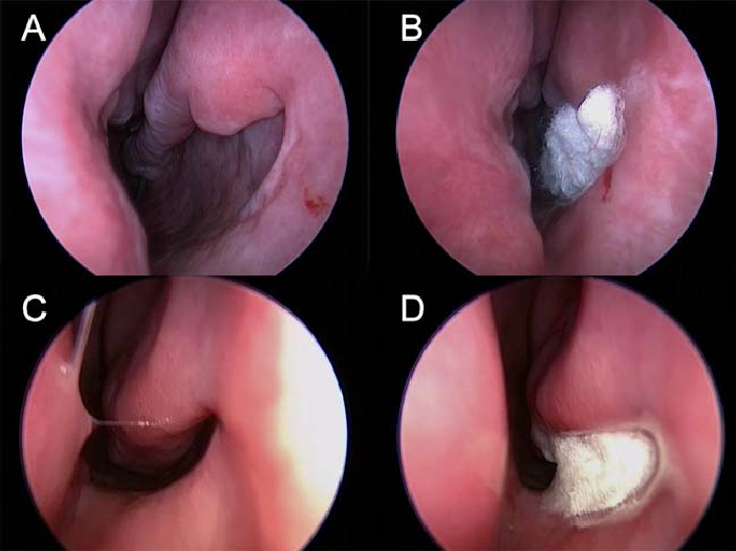
Excessive Removal of Turbinates (Turbinectomy)
Turbinectomy is a surgical procedure performed to alleviate nasal congestion, which involves the removal of the turbinates. However, excessive removal during this procedure can disrupt the natural mechanisms that regulate airflow inside the nose. This leads to uncontrolled airflow and dryness of the mucosa, which can cause ENS.
Turbinoplasty (Turbinates Reduction)
Turbinoplasty is a surgery performed to reduce the size of the turbinates to relieve nasal congestion. However, excessive reduction or damage to the turbinates can prevent them from performing their normal functions, leading to ENS symptoms.
Other Nasal Surgeries
Surgeries like septoplasty, rhinoplasty (cosmetic nose surgery), or sinus surgery can also cause ENS if excessive removal or damage to the turbinates occurs during these procedures. These surgeries can disrupt the normal airflow and moisture balance inside the nose.
Trauma
Severe trauma to the nasal region, such as a direct blow, can cause damage to or loss of function of the turbinates, leading to ENS.
Chronic Infections or Inflammations
Chronic nasal infections or inflammatory conditions can damage the nasal mucosa and lead to the loss of function of the turbinates, contributing to ENS.
Chemical Irritation
Prolonged exposure to chemical vapors or harmful substances can damage the nasal mucosa, impairing the function of the turbinates and potentially leading to ENS.
ENS is a condition that can emerge after nasal surgeries and significantly affect patients’ quality of life. Preventing excessive removal of turbinates during surgery is one of the most important ways to reduce the risk of ENS. If you are experiencing ENS symptoms, it is essential to seek advice from an ENT specialist.
What Causes Empty Nose Syndrome?
Empty Nose Syndrome (ENS) typically occurs after nasal surgeries, especially when the nasal turbinates (conchae) are excessively removed or reduced. Here are the main causes of ENS:
Excessive Removal of Turbinates (Turbinectomy)
Turbinectomy is a surgical procedure performed to relieve nasal obstruction, which involves removing the turbinates (nasal structures). However, if too much of the turbinates is removed during this procedure, it can disrupt the natural mechanisms that regulate airflow within the nose. This can lead to uncontrolled airflow and mucosal dryness, potentially causing ENS.
Reduction of Turbinates (Turbinoplasty)
Turbinoplasty is a surgery to reduce the size of the turbinates to alleviate nasal congestion. However, if the turbinates are excessively reduced or damaged, it can prevent the normal functioning of airflow within the nose, leading to the symptoms of ENS.
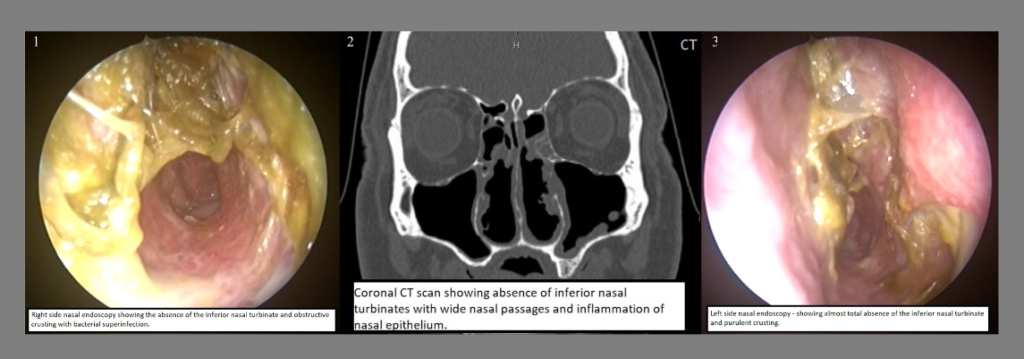
Other Nasal Surgeries
Procedures like septoplasty, rhinoplasty (cosmetic nose surgery), or sinus surgeries can also lead to ENS if excessive removal or damage to the turbinates occurs during the surgery. This can disrupt the airflow and humidity balance within the nose.
Trauma
A significant blow or trauma to the nose can damage the turbinates or cause them to lose their function, which is one of the risk factors for developing ENS.
Chronic Infections or Inflammations
Chronic nasal infections or inflammatory conditions can damage the nasal mucosa and cause the turbinates to lose their function, contributing to the development of ENS.
Chemical Irritation
Prolonged exposure to chemical vapors or harmful substances can damage the nasal mucosa, which can impair the function of the turbinates and lead to ENS.
ENS is a condition that can arise after nasal surgeries and significantly affect a patient’s quality of life. Preventing excessive removal of turbinates during surgery is one of the most important ways to reduce the risk of ENS. If you are experiencing symptoms of ENS, it is important to consult an Ear, Nose, and Throat (ENT) specialist.
How is Empty Nose Syndrome Diagnosed?
The diagnosis of Empty Nose Syndrome (ENS) is generally based on the patient’s symptoms and medical history. Diagnosing ENS can be challenging as it must be differentiated from other causes of nasal obstruction. Here are the key steps in diagnosing ENS:
Patient History and Symptom Evaluation:
The doctor will take a detailed medical history and ask whether the patient has had previous nasal surgeries, the type of surgery performed, and what symptoms they are experiencing. The symptoms described by the patient are crucial clues in diagnosing ENS. Patients with ENS typically report difficulty breathing despite open nostrils, a feeling of nasal obstruction, and nasal dryness.
Physical Examination:
A physical examination of the nasal cavity allows the doctor to assess the condition of the turbinates and other nasal structures. During this examination, the doctor can evaluate whether the turbinates have been excessively removed, the condition of the nasal mucosa, and the width of the nasal airways. This examination can be enhanced with an endoscopic procedure, allowing detailed visualization of the nasal cavity and detection of abnormalities in the nasal tissues.
Imaging Techniques:
In some cases, the doctor may order a CT scan (computed tomography) or MRI (magnetic resonance imaging) to better assess the structure of the nose and sinuses. These imaging techniques can provide detailed views of the structural changes in the nose and the condition of the turbinates. These tests can also help differentiate ENS from other causes of nasal obstruction.
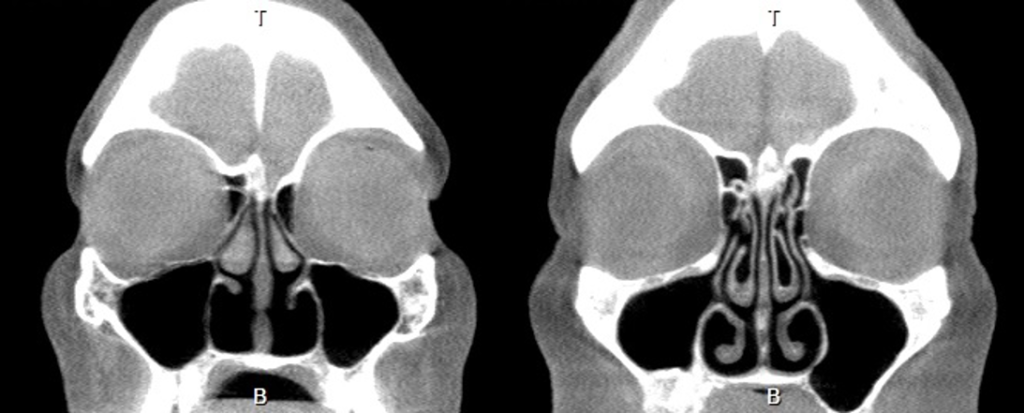
Airflow and Functional Tests:
In some cases, specialized tests may be used to evaluate airflow within the nasal cavity. These tests can show whether the airflow is normal and how the turbinates affect this airflow. Flowmetry tests can measure the speed and volume of air passing through the nasal cavity. This can be helpful in diagnosing ENS, as patients with ENS often experience nasal obstruction despite normal or excessive airflow.
Subjective Assessment and Questionnaires:
To objectively assess the patient’s symptoms, specific questionnaires can be used in diagnosing ENS. These questionnaires help the patient rate their difficulties with breathing, nasal dryness, and the impact of the symptoms on their quality of life. ENS patients typically score high on these questionnaires, which supports the diagnosis.
Test Treatments:
To confirm the diagnosis, the doctor may apply temporary treatments, such as nasal moisturizers or gels, to see if the patient experiences temporary relief from their symptoms. If the symptoms improve with this treatment, the likelihood of an ENS diagnosis increases.
The diagnosis of ENS is typically symptom-based and evaluated alongside the patient’s surgical history. If you suspect you have Empty Nose Syndrome, it is important to consult with an ENT specialist for proper diagnosis and treatment.
Can Empty Nose Syndrome be treated?
The treatment of Empty Nose Syndrome (ENS) can be challenging, and a complete recovery may not always be possible. However, various treatment methods can help alleviate symptoms and improve the patient’s quality of life. The main treatment approaches for ENS are as follows:
Symptomatic Treatment:
- Moisturizing Sprays and Gels: To relieve dryness of the nasal tissues, moisturizing nasal sprays, gels, or ointments can be used. These products help hydrate the mucosa in the nose, reducing dryness and discomfort.
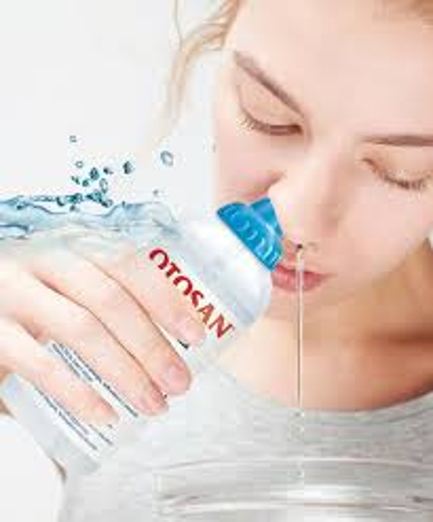
- Saline Nasal Irrigation: Rinsing the nasal passages with saline solution can help reduce dryness and crusting. This method cleans and moisturizes the nasal passages.
Surgical Treatment:
- Nasal Reconstruction: In surgical treatment of ENS, the aim is to restore the missing nasal structures by using artificial fillers or the patient’s own tissue (e.g., cartilage or fat tissue). This procedure can help regulate airflow and improve the functionality of the nasal tissues.

- Implants and Fillers: Implants or filler materials placed inside the nose can narrow the nasal airways and normalize airflow. This can help alleviate the feeling of congestion and improve breathing function.
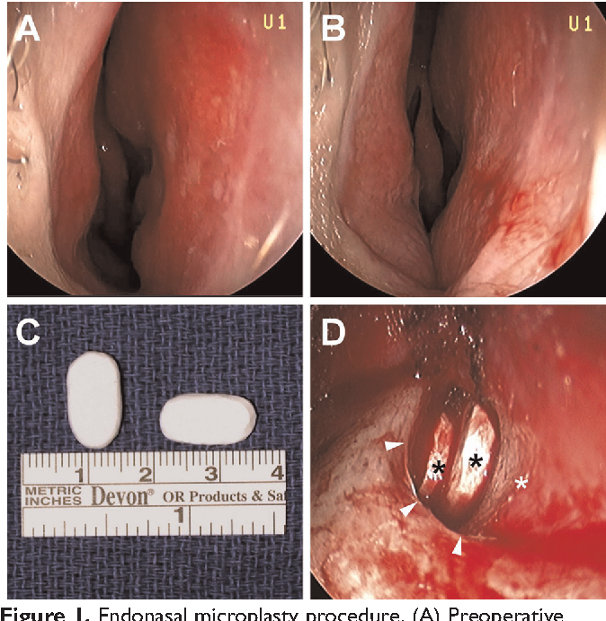
Respiratory Therapy:
- Breathing Exercises: Respiratory therapy can help patients improve their breathing techniques. These exercises can make airflow more efficient and ease breathing difficulties.
- Humidifying the Environment: Increasing humidity in the living environment can reduce nasal dryness. Using humidifiers or taking steam baths frequently can help maintain the moisture in the nasal mucosa.

Psychological Support and Counseling:
- ENS can lead to psychological challenges in addition to physical symptoms. Anxiety, depression, and stress can significantly affect the patient’s quality of life. Therefore, psychological support can play an important role in coping with ENS.
- Support Groups: Sharing experiences with others who are living with ENS can provide emotional support for patients.
Other Supportive Treatments:
- Pain Management: If ENS is accompanied by headaches or facial pain, pain-relieving medications can be used.
- Antibiotics and Anti-inflammatory Drugs: Antibiotics or anti-inflammatory medications may be prescribed in case of infection or inflammation.
Lifestyle Changes:
- Avoiding Smoking and Irritants: Smoking or exposure to chemicals that irritate the nasal mucosa can worsen ENS symptoms. Avoiding these substances can help maintain the health of the nasal mucosa.
- Balanced Diet and Fluid Intake: Maintaining overall hydration in the body can support the moisture of the nasal tissues.
Experimental and Alternative Treatments:
- Some patients may seek experimental or alternative treatments to alleviate ENS symptoms. However, since there is limited evidence on the effectiveness of these treatments, it is always advisable to consult with your doctor.
Treatment Process and Outcomes:
The treatment of ENS is individualized and can yield different results for each patient. The response to treatment depends on the severity of symptoms, the patient’s overall health, and the treatment methods applied. Some patients show significant improvement with treatment, while others may struggle to manage their symptoms entirely. Therefore, the management of ENS is typically a long-term process that requires continuous review of treatment options.
If you suffer from ENS, it is important to consult an ENT (Ear, Nose, and Throat) specialist to evaluate the treatment options that are best for you.
Is Empty Nose Syndrome permanent?
Yes, Empty Nose Syndrome (ENS) is typically a permanent condition. Since ENS is caused by structural changes inside the nose, reversing these changes or achieving full recovery can be difficult. Even surgical interventions to replace damaged or missing nasal structures with tissues that can restore natural functions have limited results.
Permanency and Management:
- Continuity of Symptoms: The symptoms of ENS are usually permanent for most patients. The sensation of nasal congestion, breathing difficulties, nasal dryness, and other symptoms tend to persist for a long time.
- Treatment and Management: While complete cure of ENS is difficult, managing symptoms is possible. Methods such as moisturizing sprays, surgical interventions, respiratory therapy, and psychological support can help alleviate symptoms and improve quality of life.
- Changes Over Time: Some patients may experience a reduction in symptoms over time, but this improvement is usually limited, and full recovery is rare. In some cases, symptoms may remain the same or even worsen over time.
Lifetime Management:
ENS generally requires lifetime management. Patients must undergo continuous treatment and care to alleviate symptoms and maintain their quality of life. This can be achieved through regular doctor visits, appropriate treatment methods, and lifestyle changes.
Knowing that ENS is a permanent condition can help patients develop long-term coping strategies. With appropriate treatment and support, many patients can learn to manage their symptoms and improve their quality of life.
How does Empty Nose Syndrome affect quality of life?
ENS can significantly affect a patient’s quality of life. Chronic breathing difficulties, sleep problems, fatigue, and nasal dryness can make daily activities more difficult and worsen overall health. Some patients may also experience psychological issues such as depression and anxiety.
How is Empty Nose Syndrome prevented?
Since Empty Nose Syndrome (ENS) generally occurs after nasal surgeries, preventing this syndrome largely depends on careful planning and execution of surgical interventions. Key measures to prevent ENS include:
Surgical Planning
- Preservation of the Turbinates: Excessive removal of turbinates should be avoided. Turbinates play a crucial role in regulating airflow and humidifying air inside the nose, so they should be preserved as much as possible during surgery.
- Minimally Invasive Techniques: Less invasive techniques should be preferred to relieve nasal congestion. If the turbinates need to be reduced, only the necessary amount of tissue should be removed to avoid excessive intervention.
Choosing an Experienced Surgeon
- Surgeon’s Experience: To minimize the risk of ENS, it is essential that the surgeon performing the nasal surgery is experienced in such procedures. An experienced surgeon will be more conscious of preserving the turbinates and managing the internal nasal structures in a balanced way.
- Pre-Surgery Consultation: Discuss all risks and possible complications of the surgery in detail with your surgeon. Learn about the approach your surgeon will take to reduce the risk of ENS.
Surgical Alternatives
- Priority to Medical Treatment: Before surgery, consider medical treatment options to relieve nasal congestion. Antihistamines, steroid sprays, or other medications may alleviate nasal congestion without requiring surgery.
- Laser or Radiofrequency Treatment: If turbinate reduction is necessary, less invasive methods (such as laser or radiofrequency) can be used. These methods can reduce the risk of excessive turbinate removal.
Post-Surgery Follow-up and Care
- Post-Surgery Monitoring: Carefully monitor the healing process in the post-surgery period. Following the care instructions provided by your doctor to maintain moisture in the nose and prevent dryness is essential.
- Doctor Check-ups: Regular post-surgery check-ups are important to ensure that the nasal healing is progressing correctly. Early detection of possible complications can reduce the risk of ENS.
Informing the Patient
- Informing About Risks: Patients should be informed about the risks of ENS before undergoing nasal surgery. When making the decision for surgery, it is important to consider these risks and alternative treatment methods.
- Managing Expectations: Having realistic expectations about the surgery’s outcomes and possible complications can help manage the post-surgery process better.
Getting a Second Opinion Before Deciding on Surgery
- Second Opinion: Before making the decision for nasal surgery, it may be beneficial to get a second opinion from another specialist. This can provide a broader perspective on the necessity of the surgery and its potential risks.
Since ENS generally occurs as a result of surgical interventions, careful planning and execution of such surgeries is the most important prevention strategy. Awareness of this syndrome by both patients and surgeons can significantly reduce the risk of ENS development.
Who is at Risk for Empty Nose Syndrome?
Empty Nose Syndrome (ENS) usually occurs in individuals with certain risk factors or following specific surgical interventions. People at high risk for ENS include:
Individuals Who Have Undergone Nasal Surgery
- Those Who Have Undergone Turbinectomy: Nasal surgeries where turbinates are excessively removed significantly increase the risk of ENS. Removing or overly reducing the turbinates can disrupt the airflow and humidity balance inside the nose, leading to ENS.
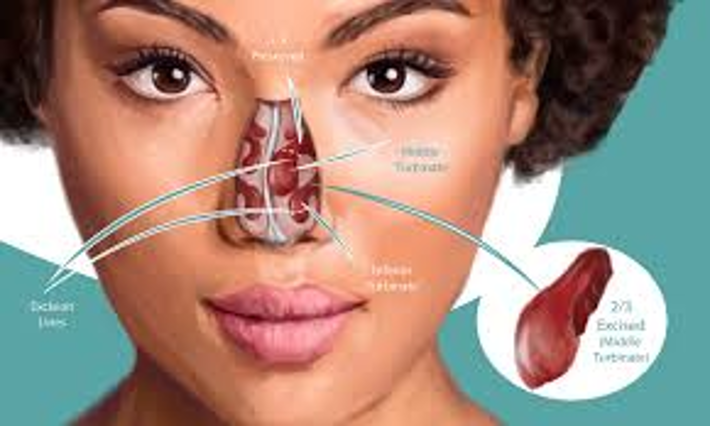
- Those Who Have Had Septoplasty and Rhinoplasty: Interventions on the turbinates during septoplasty (septum correction surgery) or rhinoplasty (nasal aesthetics) also increase the risk of ENS. Excessive reduction of the turbinates during these surgeries may lead to the syndrome.
- Other Nasal Surgeries: Other surgical interventions for sinus surgeries or to correct internal nasal structures also increase the risk of ENS.
Individuals Who Have Undergone Turbinate Reduction
- Excessive Turbinate Reduction: In surgeries to reduce turbinate size to relieve nasal congestion, excessive reduction of the turbinates can lead to ENS. Such procedures can disrupt the natural airflow and moisturizing functions within the nose.
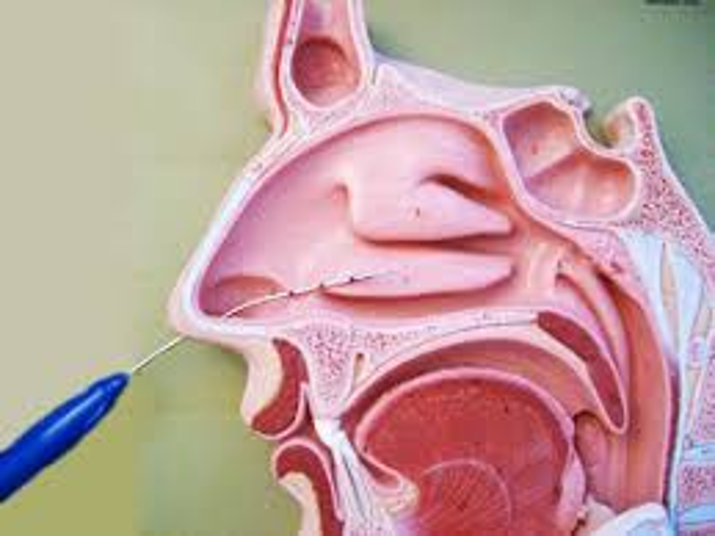
Individuals Who Have Had Multiple Nasal Surgeries
- Revision Surgeries: People who have had previous nasal surgery and then undergo additional corrective surgeries are at a higher risk of developing ENS. Each new surgery can cause further damage to nasal tissues, increasing the risk of ENS.
Individuals with Chronic Nasal Congestion and Sinusitis Issues
- Chronic Infections: People with long-term sinusitis or chronic nasal congestion are more likely to undergo surgical interventions to address these issues, which can increase the risk of ENS.
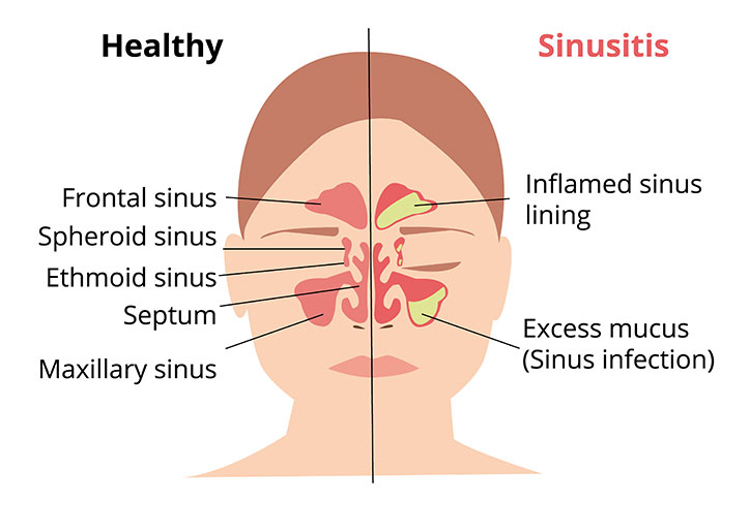
- llergic Rhinitis: Chronic conditions that cause nasal congestion, such as allergic rhinitis, may lead patients to seek nasal surgeries, thereby increasing the risk of ENS.
Individuals Who Have Suffered Nasal Trauma
- Post-Trauma Surgery: People who have experienced nasal trauma and subsequently undergo surgery to correct the nasal structure are also at risk for ENS. Nasal surgeries following trauma can lead to damage or removal of the turbinates.
Individuals Exposed to Chemicals
- Long-Term Chemical Irritation: People who have prolonged exposure to chemicals or fumes may suffer damage to the nasal mucosa and turbinates, contributing to the development of ENS.
Smokers
- Smoking: Smoking irritates the nasal mucosa and can negatively impact the function of the turbinates. This can increase the risk of ENS, especially in individuals who smoke and have undergone nasal surgery.
Rare Genetic and Inflammatory Conditions
- Autoimmune and Inflammatory Diseases: Certain rare autoimmune or inflammatory diseases can cause damage to the nasal mucosa, contributing to the development of ENS.
ENS is a condition that usually occurs following nasal surgeries and is more common in individuals with certain risk factors after such surgeries. To prevent ENS, it is important that nasal surgeries are carefully planned and that the turbinates are preserved as much as possible.
How to Cope with Empty Nose Syndrome
Coping with Empty Nose Syndrome (ENS) can be challenging, but there are several strategies and treatment methods available to help alleviate symptoms and improve quality of life. Managing ENS often requires a multidisciplinary approach. Here are some recommended ways to cope with ENS:
Moisturizing and Nasal Treatments
- Moisturizing Sprays and Gels: Saline sprays, gels, or ointments can be used to moisturize nasal tissues. These products help relieve dryness inside the nose and prevent crusting.
- Saline Rinses: Rinsing the inside of the nose with saline can alleviate dryness and irritation. Regular nasal rinses help keep the mucosa moist and ease symptoms.
Surgical Interventions
- Turbinate Reconstruction: Surgical interventions can be considered to alleviate ENS. This involves placing cartilage grafts or fillers to replace missing tissues within the nose, aiming to make airflow more natural.
- Implants and Fillers: Implants or fillers can be used within the nose to narrow the airways and re-regulate airflow. This can reduce the feeling of congestion and improve breathing.
Breathing Therapy
- Breathing Exercises: Breathing therapy can help you learn proper breathing techniques. These exercises focus on optimizing airflow in the nose and making breathing more comfortable.
- Yoga and Meditation: Relaxation techniques like yoga and meditation can reduce stress and improve breathing. These techniques provide both physical and emotional relaxation.
Psychological Support
- Psychotherapy and Counseling: ENS can lead to psychological issues such as anxiety, depression, and stress. Speaking with a therapist or counselor can help you cope with these emotional challenges.
- Support Groups: Sharing experiences with others who live with ENS can provide emotional support. Support groups can also be beneficial for learning coping strategies.
Sleep Adjustments
- Improving the Sleep Environment: Elevating your head slightly while sleeping can improve airflow in the nose. You can also use a humidifier to increase the humidity level in your room.
- Sleep Apnea Treatment: If ENS leads to sleep apnea, it’s important to explore appropriate treatment options for sleep apnea. This can improve sleep quality and support overall health.
Nutrition and Hydration
- Adequate Hydration: Drinking plenty of water is essential for maintaining the body’s moisture balance. Sufficient fluid intake can help keep the nasal mucosa moist.
- Anti-inflammatory Diet: Certain foods can help reduce inflammation inside the nose. A diet rich in fruits, vegetables, omega-3 fatty acids, and antioxidants can support nasal health.
Lifestyle Changes
- Avoiding Smoking and Irritants: Smoking or exposure to chemicals that irritate the nasal mucosa can worsen ENS symptoms. It’s essential to avoid such substances.
- Stress Management: Stress can exacerbate ENS symptoms. Stress management techniques (e.g., yoga, meditation, deep breathing) can help increase relaxation in daily life.
Regular Doctor Check-ups
- Follow-up and Monitoring: Continuing regular doctor check-ups is important to monitor the progression of ENS symptoms and adjust your treatment plan. Your doctor can recommend the most suitable treatment options to alleviate your symptoms.
Alternative Therapies
- Acupuncture: Some patients try alternative therapies like acupuncture to relieve ENS symptoms. The effectiveness of these therapies can vary from person to person, so it’s important to discuss these options with your doctor.
Coping with ENS can be both physically and emotionally challenging, but with proper treatment and support, it’s possible to manage symptoms. Treatment response can vary from person to person, so working with your doctor to determine the best strategies for you is essential.
My paths crossed with Dr. Deniz because of my vocal cord polyp. My indecision before my doctor cost me 8 months. It didn't take us 8 minutes to get examined and decide on surgery. I pray for you for restoring my hoarse voice. I'm so glad Mustafa Deniz Yılmaz🙏
My nephew Ugur Karaer was suffering from empty nose syndrome. We went to every doctor in Istanbul. Finally, God brought us to Dr. Deniz. He performed the surgery successfully and saved my nephew's life. May God bless him.
I don't know how many surgeries I've had myself. But when it comes to children, everything calms down. 🙁 After seeing three doctors for my 2.5-year-old daughter's adenoid and tonsillectomy, we thankfully found Prof. Dr. Mustafa Deniz Yılmaz. His knowledge and patient approach made us believe he was by far the best doctor in this field. His assistant, secretary, the specialist who performed the hearing test... the entire team was extremely professional. Success is a team effort. That's why the whole process went smoothly, and we left satisfied. 💕 May God bless him 🙏🏻
We came from Almaty on vacation, and my son started having ear pain from the very first day. They recommended drops and medications, but nothing helped. We stumbled across a doctor online and decided to take a chance. She turned out to be wonderful, and after the first dose of medication, my son felt better. Within a week, there was no trace of the infection. Special thanks to the translator for her care, understanding, and professionalism.
I was suffering from empty nose syndrome. For those who don't know, I should say that almost all of my nasal tissue was removed. It is a very bad disease. I went to 100 ENT doctors in Istanbul and they couldn't find a solution. Finally, I found Deniz Hoca, who is an expert in this field, and he took cartilage from my rib and performed the surgery and I got better. Thank you very much for everything.
I had a tonsillectomy performed by our doctor, Mustafa Deniz Yılmaz. The surgery went smoothly, and although it's said to be more difficult for adults, I recovered very quickly. I'm so glad I chose Mustafa.
Hello, they told me that my parotid gland needed to be removed. I went to so many doctors that I finally decided on Dr. Mustafa. I am glad I chose Dr. Mustafa. You do not need to look for a doctor, you can choose my doctor with peace of mind without any worries.
I had a nose surgery 9 months ago by Mustafa Deniz Hoca. Both he and his team are always in touch with you before and after the surgery and provide detailed answers to questions. I am very pleased with my nose in terms of aesthetic appearance and health. Thank you and your entire team for everything.
First of all, I would like to thank my instructor Mustafa Deniz Yılmaz for his efforts. I had a nose surgery about 4 months ago. Like everyone else, I had the opportunity to research and compare the videos taken by many people who had this surgery and the perspectives of experts in their field on nose surgeries. I am very happy that I made the right decision and had surgery with my instructor Mustafa. I sincerely recommend my instructor Mustafa to everyone who wants to breathe both aesthetically and healthily and has problems.
I had a nose surgery in February. They never failed to show interest from the moment I entered the clinic until the last moment. No one even understands that I had plastic surgery. Mr. Deniz is one of the best in his field. I recommend it to everyone.
I had a nose surgery 3.5 months ago. The surgery and recovery process went great. There are a few things you should pay attention to after the surgery, they don't affect your quality of life too much. The doctor makes you feel very comfortable about that because it's not as complicated as you think. Other than that, I can breathe easily now, which is the most important thing. Also, Assistant Ayşegül Hanım gets back to you directly at any time of the day, no matter how long it has been since the surgery, if you have any questions. I'm very happy that I chose the right doctor.
I met Dr. Deniz upon the recommendation of another patient. He performed my ear surgery approximately 6 months ago with the diagnosis of Cholestatum. His care and follow-up of his patient both before and after the surgery for 6 months is commendable. I would also like to thank Dr. Deniz for his confidence in his patient and his friendly approach. I am in a much better position after the surgery, both in terms of hearing and risk of infection. I would like to thank Prof. Dr. Mustafa Deniz Yılmaz and his team.

Anesthesia Type: General

Operation Time: 2-3 Hours

Pain: Mild

Length of hospital stay: 1 night

Recovery Time 7 days
Fill in the Form
Let us call you
Take the First Step Now
For more information, contact us
Schedule your appointment or online consultation with Prof. Dr. Mustafa Deniz Yılmaz now. Take the first step in your treatment process and let’s begin your journey to recovery together with personalized solutions.


